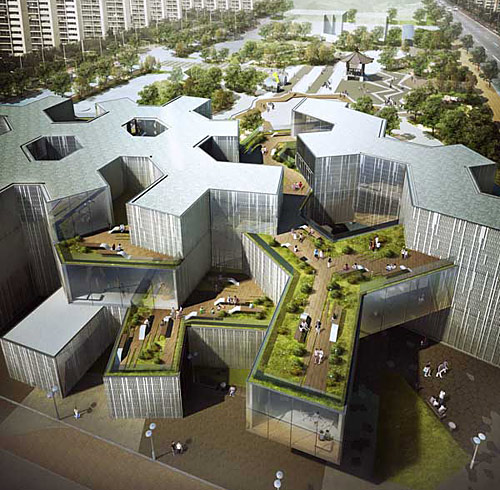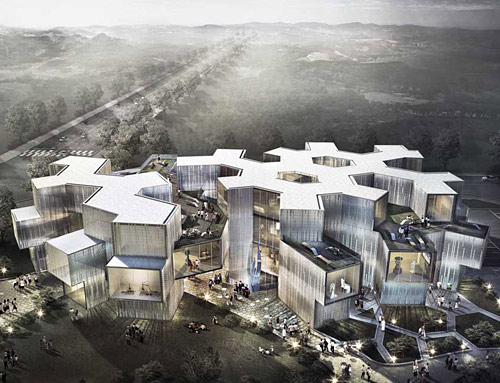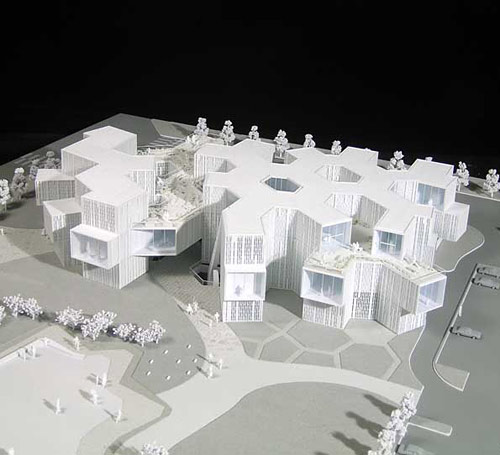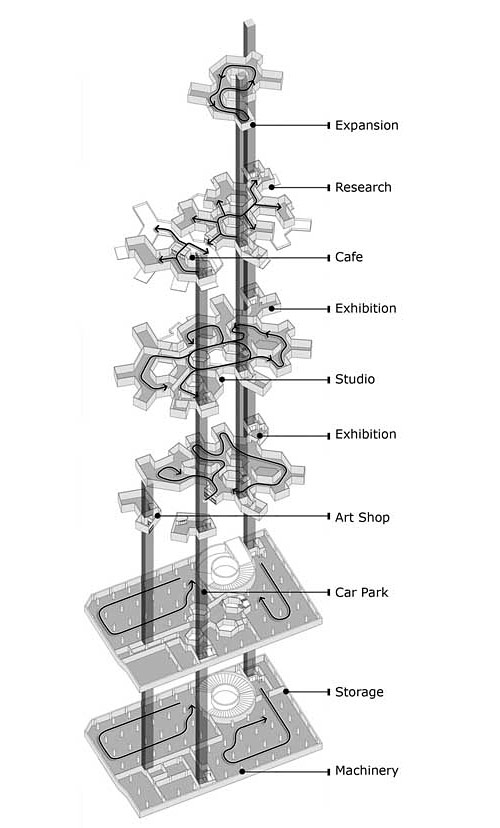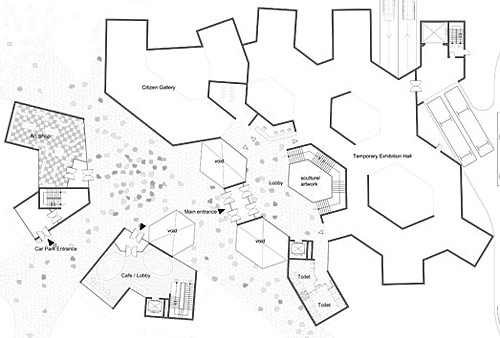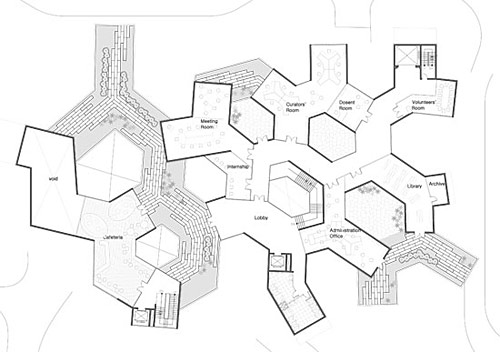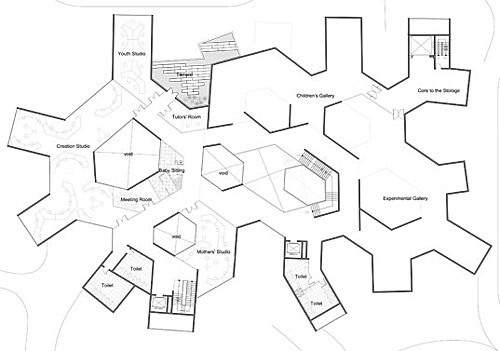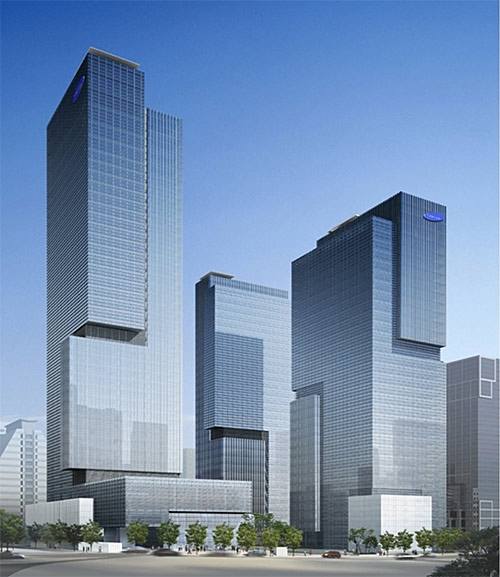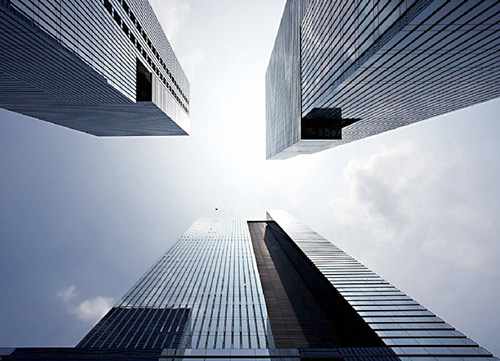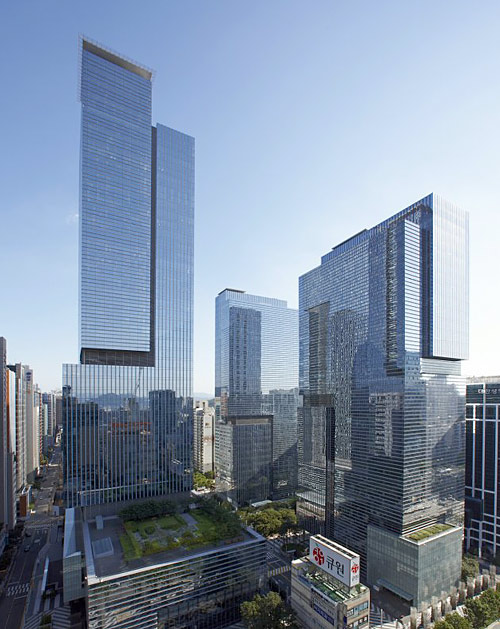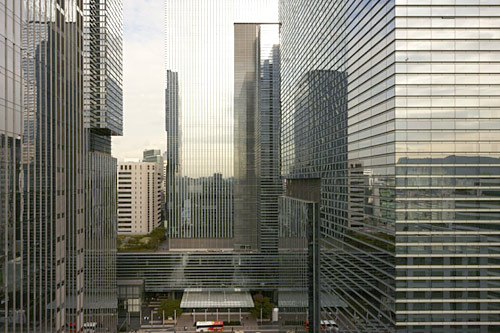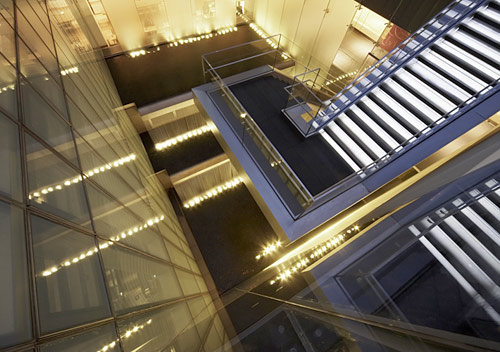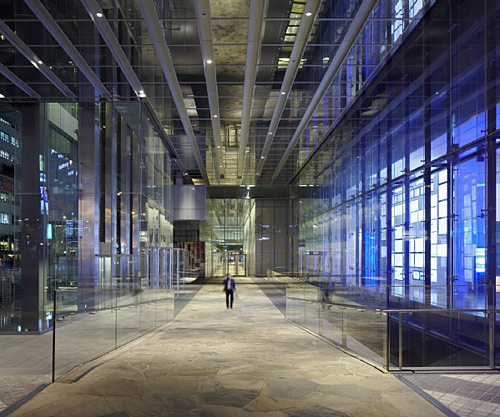
Project was a competition entry, for which it received second prize in the last phase. It will therefore not be built in it's current form or location.
Name Project Rolling Curves - World Business Center, Busan
Project one 100-storey highrise and two 50-storey highrise + masterplan, Busan
description International Invited Competition for The World Business Center, Busan, Korea

Centum City's Block 23 & 24 in Haeundae-gu, Busan City, Korea
function The Competition for the WBC, focuses on two blocks within Centum City, to establish an integrated design plan of super high-rise structures in this area. It aims to develop Busan as a hub city of the Northeast region and to generate the maximum synergy in connection with development and extension of other complexes within Centum City. The objective of the project is to achieve the tallest height in Asia - by creating a landmark tower with mixed-use functions.
contribution UNStudio Competition (Schematic Design)
 The metropolis Busan is in continuous change, evolving to become the most technological city in the world. The goal of the competition is to create a landmark for the city and the region with a family of high-rise towers at the citys most select location, crowned by a super high-rise which is to be the tallest tower in Asia. Our proposal responds to this challenge by presenting a strategy for an economically and structurally safe and sustainable development, enabling a phased realization. The towers are all based on the same mathematical principle of rolling curves, which in plan result in a circular core with smaller circles woven into its circumference like the petals of a flower. This principle has the potential of being worked out in different ways for each of the towers and affords the user-based features of an open, adaptable plan, and panoramic and diverse views.
The metropolis Busan is in continuous change, evolving to become the most technological city in the world. The goal of the competition is to create a landmark for the city and the region with a family of high-rise towers at the citys most select location, crowned by a super high-rise which is to be the tallest tower in Asia. Our proposal responds to this challenge by presenting a strategy for an economically and structurally safe and sustainable development, enabling a phased realization. The towers are all based on the same mathematical principle of rolling curves, which in plan result in a circular core with smaller circles woven into its circumference like the petals of a flower. This principle has the potential of being worked out in different ways for each of the towers and affords the user-based features of an open, adaptable plan, and panoramic and diverse views.
The position of the buildings on site enables the integration into the existing infrastructure of Centum City. The super high-rise tower of block 23 is located next to busy streets facing the Shinsangae entertainment center, shielding the open public space from the influences of highway traffic. An additional connection to the surroundings is established by pedestrian bridges, reaching to the Shinsangae center to the one side and the Olympic park on the other side of the plot. The smaller towers on block 24 are arranged in a way that guaranties maximum ocean view for both towers and as little overshadowing as possible. The landscape in between the buildings transforms from an urban, public atmosphere to a more private, nature related scenery.

The floor height within each unit varies, to accommodate structure, service pipes and fan coil units but also to achieve an interesting spatial configuration, including sunken water features.

In addition to fulfilling the required floor area, this tower typology delivers a great expanse of façade for high quality interiors . Each unit consists of a flexible open loft space, suitable for office use and a separate lodging area of master bedroom and bathroom. This small, more private zone is located at the most concave part of the glazed façade, providing a panoramic ocean view. The visual connection to nature is intensified by a water feature next to the façade.

Design coherence is achieved by applying the same geometrical and organizational concept to each of the three towers. The geometrical diagram is an epicycle generating set of algorithms. Two algorithms are utilized to script floor plans for each programmatic use.
The topological configuration results from continuously changing elements that evolve in space and time. Conceived as grid-based strata, the ground level is affected and deformed by inserted attractors and the existing landscape condition. Like a tensile skin, the surface of the plinth is informed by the implementation of programmatic elements and the position of the towers. It adapts by changing densities and orientation, resulting in a lively urban environment. At the point where the towers meet the plinth this tensile grid allows a unification of the two surfaces and a smooth transition from the one to the other. The façade structure is extended into the surface of the plinth, blending in a fluent artificial landscape, forming cuts and apertures to create entrances and natural lighting for the spaces underneath.

logical substrata

The two towers are proposed in reinforced concrete with outriggers. This proposal is an economic, sound and fitting structural solution for a tower of this use, size and proportion. Within this structural system the core carries lateral shear loads and the outriggers mobilise the columns to carry vertical bending forces, limiting lateral movements and accelerations at the top of the building.
The lower floors of the tower are all of standard floor dimension and repetitive floor to floor to allow the use of flying formwork.

materials and a color codes given by the planting.


loping paths, based on a three-dimensional grid organize the traffic flows on site. Pedestrian and vehicular flows are separated and distributed to different levels. Easy way finding is afforded by view connections related to the slopes of the landscape, as well as by distinctive
Adaptable lay-outs; adaptable facades
The formal transition zone in which the cruciform (4 plan extensions) plan configuration adjusts to a triform (3 plan extensions) occurs within a defined centre portion of the building. Within this zone are two sets of outriggers at the top and bottom of the transfer structure. The transfer structure is formed by a triangulated cylindrical warren truss making the transfer between the six upper columns and the eight lower columns. Outriggers are required at the top and bottom of these transfer columns. The outriggers are storey deep trusses between the core and outer columns. The outriggers mobilise the columns in tension and compression to limit the lateral deflections and more importantly the accelerations at the top of the building as described above. Outriggers are required at the top of the building as well.



World Business Center Busan - Design Team:
UNStudio / ARUP / B+B
Architect: UNStudio
Ben van Berkel, Caroline Bos, Tobias Wallisser with Elke Scheier, Jay Williams, Adolfo Nadal, Daniel Skrobek, Zhengfei Wang, Luming Wang, Jörg Petri, Zhenyuan Yang
Environmental, energy and services Design: ARUP Amsterdam
Jaap Wiedenhoff, Hanneke van Schijndel
Structural System and Geometrical advise: ARUP London
Charles Walker, Daniel Bosia, Simon Whittle
Lighting: ARUP Amsterdam
Rogier van der Heide, Ben Kreukniet, Susheela Sankaram
Landscape Design: B+B Amsterdam
Martine van Vliet, Uli Centmayer, Andrius Skiezgelas
UNStudio

